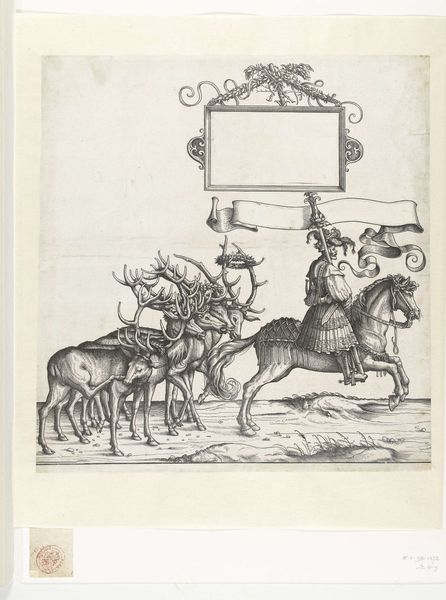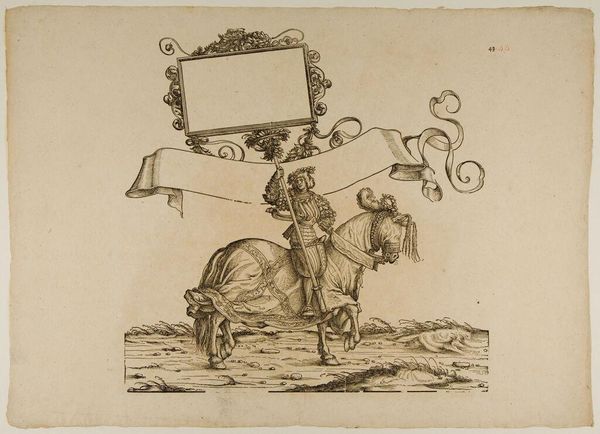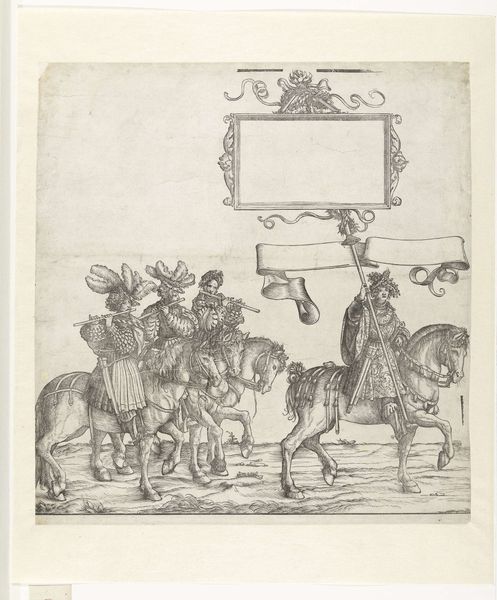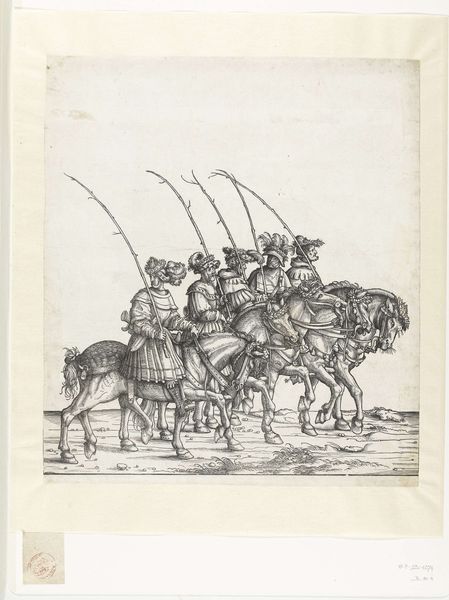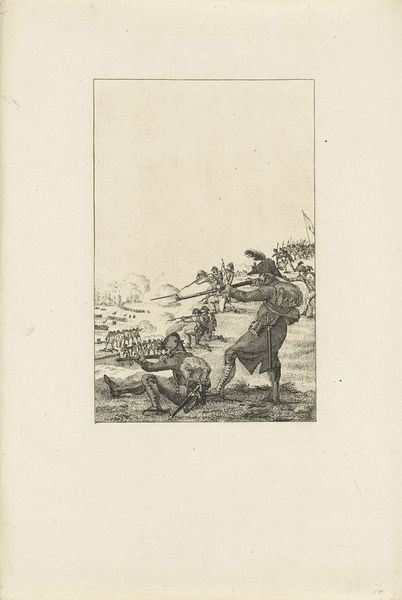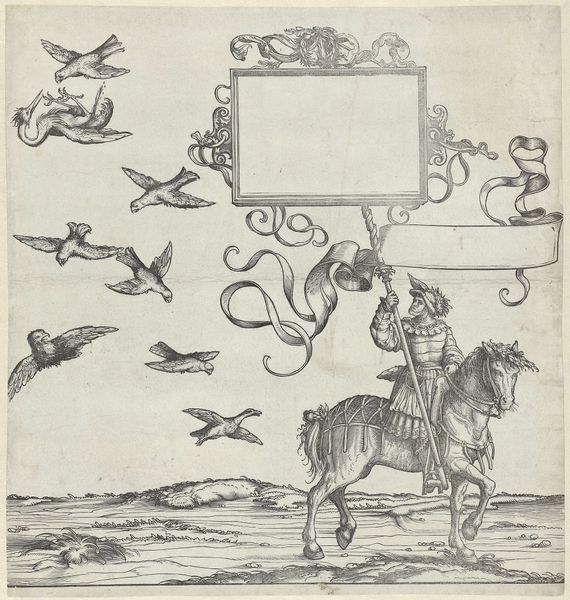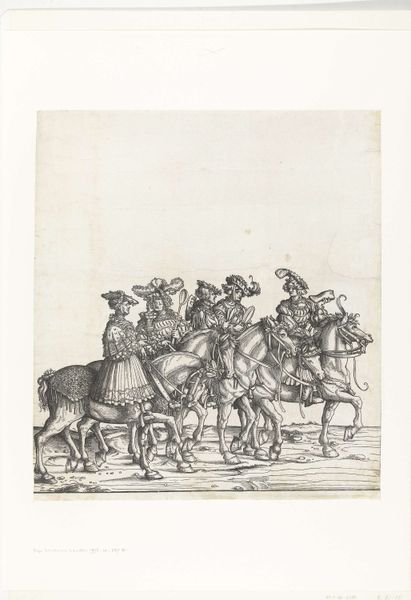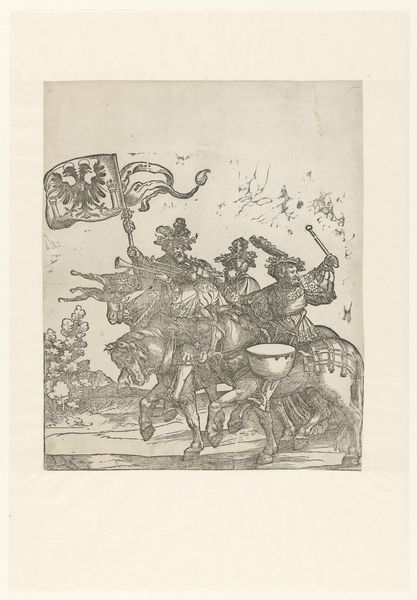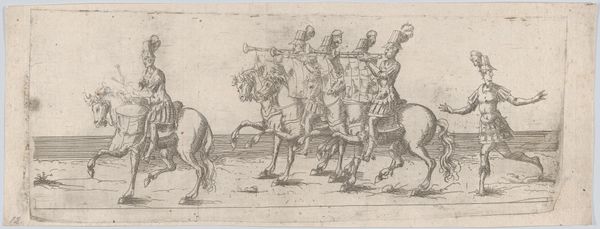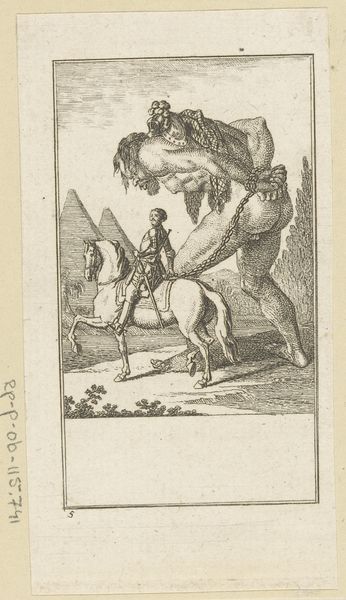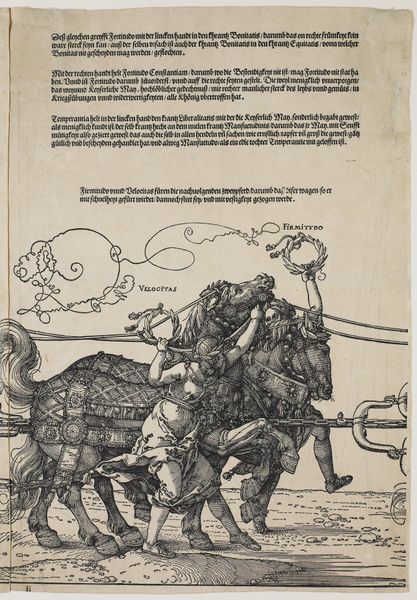
drawing, print, engraving
#
drawing
# print
#
landscape
#
figuration
#
11_renaissance
#
history-painting
#
northern-renaissance
#
engraving
Dimensions: height 400 mm, width 375 mm
Copyright: Rijks Museum: Open Domain
Editor: This engraving, titled "Steenbokken en gemzen en standaarddrager te paard" by Hans Burgkmair, made sometime between 1483 and 1526, is incredibly detailed. I’m immediately drawn to the contrast between the regimented figure on horseback and the herd of animals. What can you tell me about it? Curator: What's striking is Burgkmair’s process itself. Consider the labor: engraving copperplate, multiple impressions allowing for wide dissemination, turning an image into a commodity. The act of making art, transforming raw material, becomes the story. Think of the economics surrounding printmaking at the time. Who had access to these images and what does that tell us about visual culture? Editor: So, you are less focused on the historical narrative, and more on the impact of reproducible media? Curator: Precisely. Consider that this print probably wasn’t just passively looked at. It might have been colored, copied, used as inspiration for other craft objects – textiles, furniture… The relationship between "high art" like engraving and what we might call decorative arts or design gets fascinatingly blurred. Were these prints, then, commodities, prototypes or works of art? What function did the process serve for the artist as labor? Editor: That makes me think about the value assigned to this work versus functional objects. Was Burgkmair consciously challenging established hierarchies with printmaking, or was that an unforeseen result of the method? Curator: It is hard to know Burgkmair’s exact intentions, but looking at the material conditions – the expense of copper, the time investment of engraving, the potential for profit through sales – we gain a clearer understanding of how art functioned within a complex economic system. Perhaps that standard-bearer symbolizes more than just power; he represents a system of production. Editor: So, thinking about Burgkmair less as an individual genius and more as part of a production and dissemination system, reveals a new side to the artwork's historical context. I’ll never look at engravings the same way. Curator: Exactly, focusing on these material processes challenges us to consider the cultural and economic implications surrounding the making of art.
Comments
No comments
Be the first to comment and join the conversation on the ultimate creative platform.

